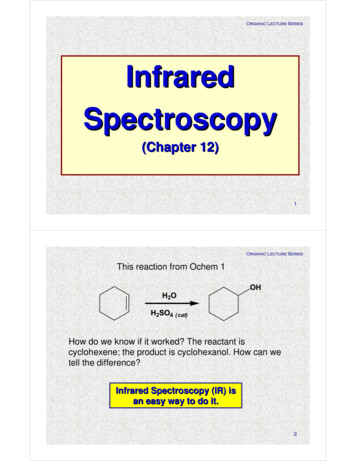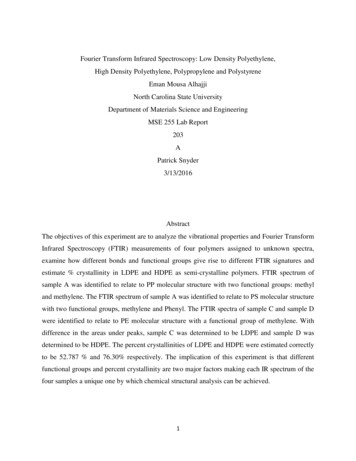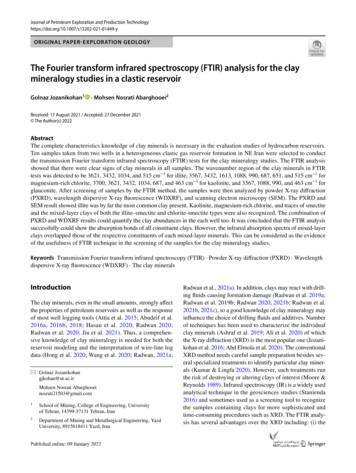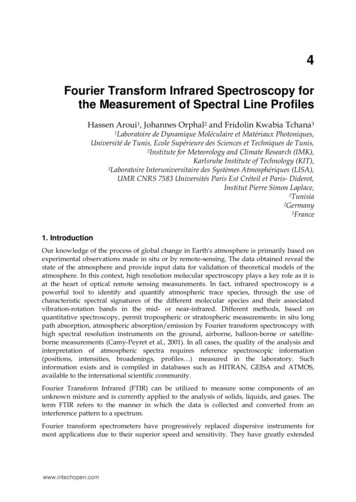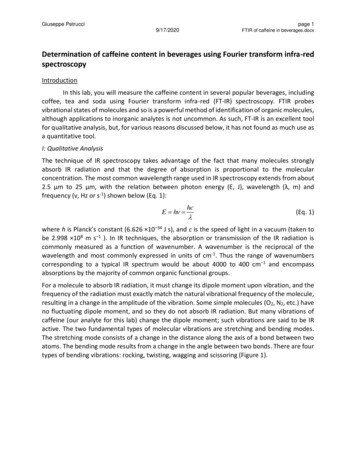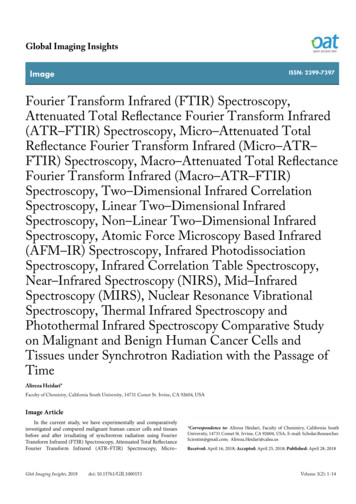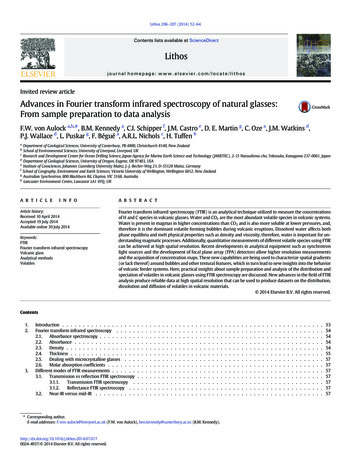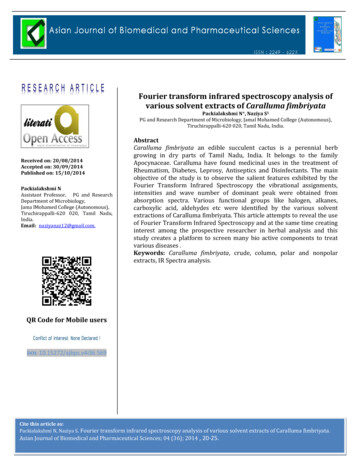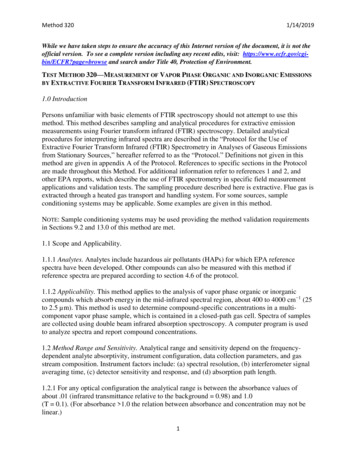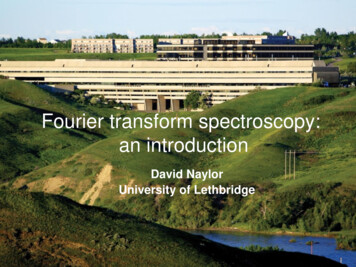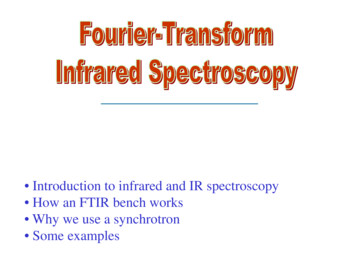
Transcription
Introduction to infrared and IR spectroscopy How an FTIR bench works Why we use a synchrotron Some examples
William HerschelAround 1800, Herschel studied the spectrum of sunlight using a prism.He measured the temperature of each color, and found the highesttemperature was just beyond the red, what we now call the 'infrared'.The Science Museum, UK
The Infrared Part of the EM SpectrumIR units: wavenumbers (cm-1),10 micron wavelength 1000 cm-11 eV 8100 cm-11 THz 33 cm-1300 Kelvin 210 cm-1Near-IR: 4000 – 14000 cm-1Mid-IR: 500 – 4000 cm-1Far-IR: 5 – 500 cm-1IR covers 1 meV to 1 eV
What can we learn from IRspectroscopy? Atoms vibrate with frequencies in the IR range Chemical Analysis: Match spectra to known databases– Identifying an unknown compound, Forensics, etc. Monitor chemical reactions in-situ Structural ideas: Can determine what chemical groups are in a specificcompound Electronic Information: Measure optical conductivity– Determine if Metal, Insulator, Superconductor, Semiconductor– Band Gaps, Drude model
Contact-less Measurements Much easier to mount & measure samples Can work with solids, liquids, gases Is easier to vary other sample properties via Temperature (cryostats, heaters) Pressure (Diamond Anvil Cells) Magnetic Field
An Example: CO2OCOIR AbsorbenceSymmetric Stretch(Dipole moment 0 so not IR active)Asymmetric Stretch(Has dipole moment so IR active)Wavenumber (cm-1)A Dipole Moment charge imbalance in the moleculeBending Mode(Has dipole moment so IR active)
Example infrared spectrumof a biological systemAmide IAmide IIWaterLipidsDNA/RNATypical IRabsorbancepositions:Protein Amide I: 1690-1600Protein Amide II: 1575-1480Lipid CH2:3100-3000Lipid -CH2, -CH3: 3000-2850Nucleic Acid -PO2-:1225, 1084The peak positions of Amide I and IIare sensitive to the protein secondarystructure (α-helix, β-sheet, randomcoils, etc.)A good reference: Mantsch and Chapman, Infrared spectroscopy of biomolecules. 1996, New York: Wiley-Liss.
Albert Michelson (1852-1931)Michelson wanted to measure the speed theearth moves through the ether (the medium inwhich light travels). By measuring theinterference between light paths at right angles,one could find the direction & speed of theether.Michelson’sfirstinterferometer(1881)
Michelson-Morley ExperimentMichelson-Morleyinterferometer (1887)Still no fringes No ether.The speed of light is constant.A new physics of light was needed."My honored Dr. Michelson, it was you wholed the physicists into new paths, and throughyour marvelous experimental work paved theway for the development of the theory ofrelativity.“ – Albert Einstein, 1931.
How an FTIR Spectrometer WorksPathlength difference xThe intensity detected of two plane waves: 2 22I E E1 E2 2 E1 E2 cos(θ )Normal incidence, θ kx, can simplify to:I ( x ) 2[1 cos(kx )]For non-monochromatic light: I ( x ) [1 cos(kx )]G ( k )dk0 eikx e ikxdk G ( k )dk G ( k )200 11 I (0) G ( k )eikx dk22
FTIR Math ContinuedWe can rewrite this to something more familiar:2 I ( x ) I ( 0)1W ( x) 2π2π ikxGkedk() A Fourier Transform!The detected intensity as a function of moving mirror position, I(x),can therefore be converted into G(k), the intensity spectrum as afunction of frequency by a simple Fourier transform.
FTIR SpectrometersIn practice one cannot measure from - to . The resolution of ameasurement is simply given by how far in x you measure.resolution 12πxmaxRapid-Scan measurements: Sweep mirror quickly, average many interferograms Very fast & easy Not high resolution Not for quickly changing signals or very low signalStep-Scan measurements: Step to each x position, then measure (long average, ortriggered time series). Can have very long path length. Excellent for fast time resolution, low signals (lock-in) Harder to run stably.
Infrared SpectroscopyMeasurements
A Fourier Transform! The detected intensity as a function of moving mirror position, I(x), can therefore be converted into G(k), the intensity spectrum as a function of frequency by a simple Fourier transform. FTIR Spectrometers. .
